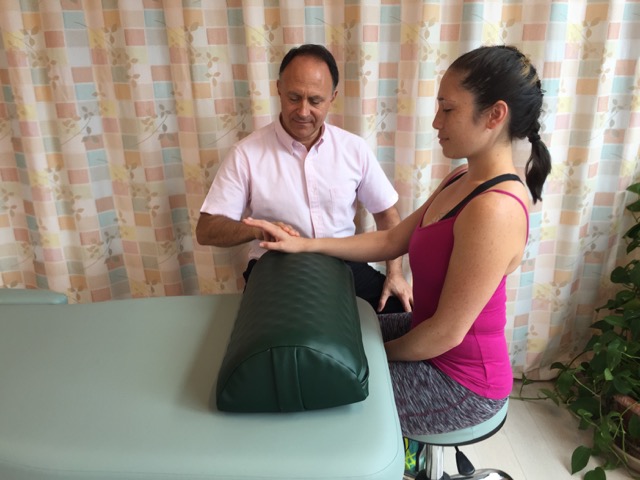Assessment/ Diagnosis:

Manual resistance to extension of the hand at the wrist joint will cause pain (show positive) for a client/patient with tennis elbow. Permission: Joseph E. Muscolino.
Knowing how to assess/diagnose tennis elbow is an extension of our understanding of the underlying pathomechanics of the condition. Active extension range of motion of the hand at the wrist joint or the fingers at the metacarpophalangeal and interphalangeal joints will likely cause pain because the associated musculature contracts and pulls on the common extensor tendon and the lateral epicondyle of the humerus. Active or passive flexion of the wrist or fingers would also likely elicit pain because it stretches the associated musculature and therefore pulls on the common extensor tendon and the lateral epicondyle. Because the extensor carpi radialis brevis is usually affected the most, active radial deviation may also show positive for pain. Given the irritation, swelling, and degeneration of the common extensor tendon, and the irritation and swelling of the lateral epicondyle, palpation would also likely elicit local pain.
Medically, tennis elbow is usually diagnosed via ultrasound or MRI. These are the most accurate ways to assess/diagnose the extent of possible degeneration and/or tearing of the common extensor tendon.
Differential diagnosis/assessment:
Tennis elbow is a fairly simple and straightforward condition to assess. The most likely condition that needs to be differentially assessed is the presence of myofascial TrPs in the bellies of the common extensor muscles. However, the presence of these TrPs could also be considered to be part of the overuse and consequent tightness of the common extensor musculature, and therefore a part of tennis elbow itself, perhaps at an early stage. Tendinitis distally at the wrist joint of the muscles of the common extensor tendon will likely show positive for the same active and passive ranges of motion, but the location of the pain will be at the wrist region instead of the elbow.
The only other condition that might be confused with tennis elbow is dysfunction of the head of the radius, whether it is with its articulation with the humerus at the humeroulnar (elbow) joint or with the ulna at the proximal radioulnar joint. However, dysfunction of the radial head is not that common and would not show positive during physical examination with contraction or stretching of the musculature of the common extensor tendon.


